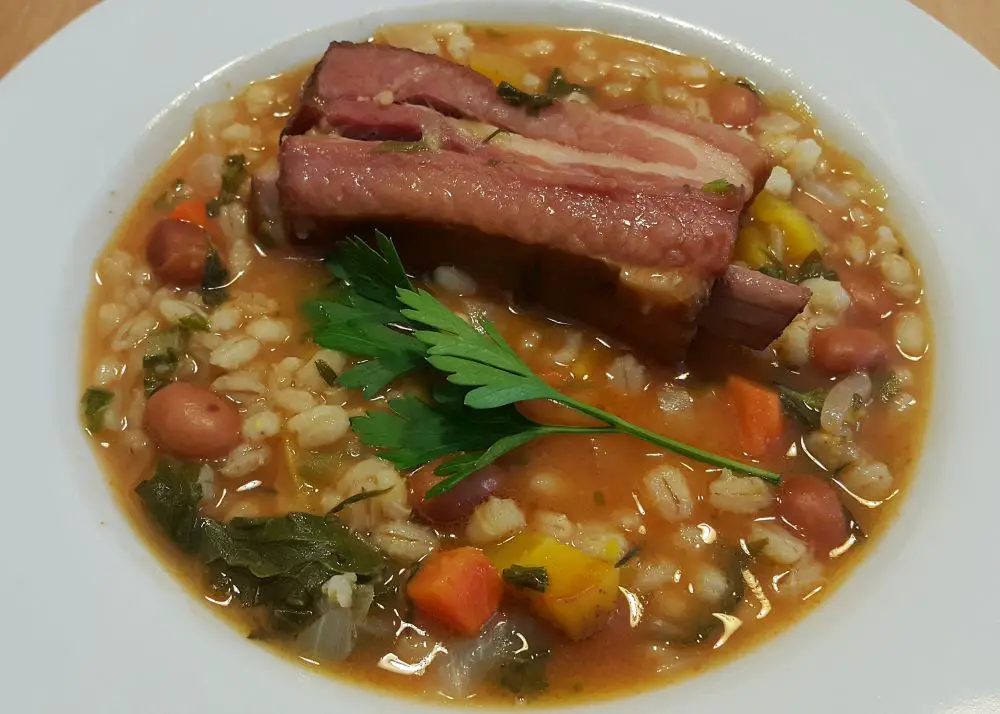Ljubljana related
Gardening season is coming to an end, and with it the celebration of the alliance between tasty and healthy. Little needs to be added to the fresh vegetables and herbs from our gardens in order to create a perfectly aromatic tasty dish, sometimes in less than 30 minutes even if we are not very speedy with out knife.
As far as we are concerned, the best pasta sauce recipe therefore consists of rustically chopped fresh tomatoes and other vegetables, enhanced with some sharp cheese, preferably well-aged parmesan.
Fry chopped onions and leek on olive oil till soft. Add salt and the rest of the vegetables in the following order: garlic, carrots, zucchini, broccoli and tomatoes. Vegetables should release their own juice, if they seem to be dry and burning, lower the heat. After about 15-20 minutes add olives and cook for another few minutes. Before serving top with grated parmesan and sprinkle with fresh basil.
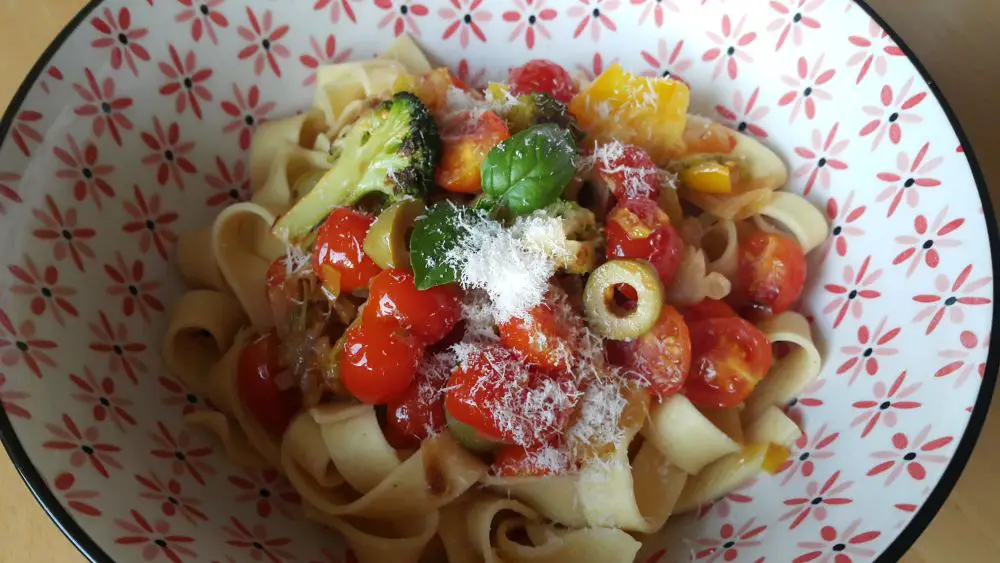
Dober tek!
Coronavirus lockdown is coming to its end just as the cherry season is peaking in Goriška Brda, a picturesque place of stone built villages surrounded by vineyards.
Therefore, we made the decision to celebrate our freedoms and spring with a relatively simple but delicious cherry mousse cake.
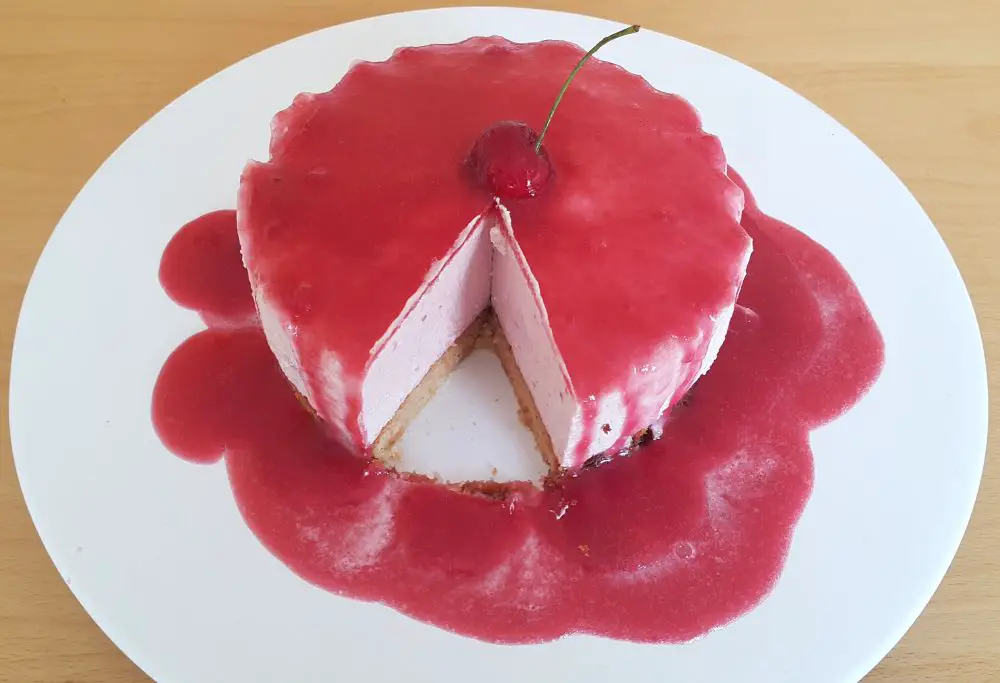
We decided to keep the recipe at its simplest, leaving all the options for upgrade open to our readers: for example, half of the cream can be replaced with cream cheese, different fruit can be used, crushed caramelized almonds can be placed between the layers, the cake can be wrapped in marzipan, and so on. Our goal was to make a great cake with minimum ingredients with an emphasis on cherries from Goriška Brda, which are only available for a short period each year.
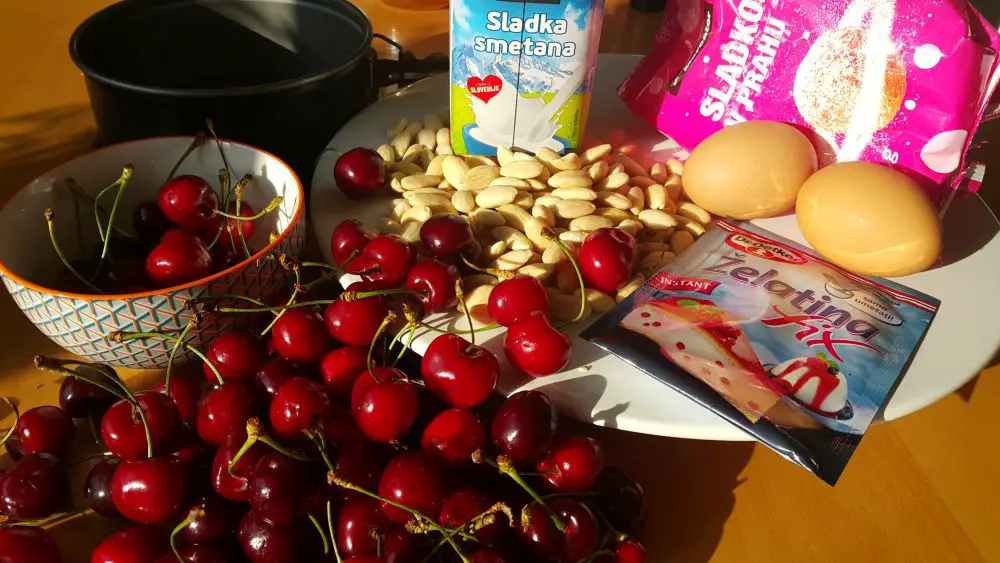
Make the base of the cake first: roast the almonds so they release some flavour in a pan. Then grind the almonds, mix them with about 2 tbsp. of sugar and add an egg white, which will keep the ingredients together. Place the mixture at the bottom of the baking pan and bake at 175 degrees Celsius for about 20 minutes. Check so that it doesn’t burn, although we quite enjoyed the slightly dark caramelised bottom.
Meanwhile, destone half of the cherries and put them in a pot with some sugar and a spoon of water.
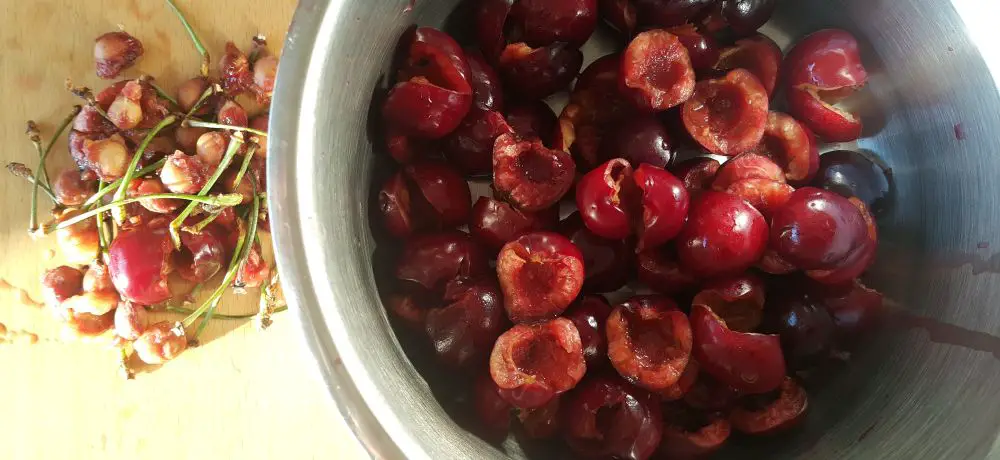
Simmer for about 10 minutes till the cherries release juice and turn slightly soft. Then blend it all up and leave to cool down.
If you’ll be using gelatine powder, add it to the blended cherries when they’re already cooled. Gelatine in sheets (large packets come with 3 sheets, use them all) needs to be soaked in cold water first, then drained and dissolved in the blended cherries while still hot. In either case, the liquid should be cooled down before being stirred into the whipped cream.
Whip the cream then slowly stir in the cooled down cherry blend. Do this when the base of the cake is already cool. Put the mousse on top of the cake and place the cake in the fridge for a few hours for the gelatine to do its work.
Before removing the sides of the baking pan, separate the cake from the pan with a narrow knife. Do the same when taking it off the bottom of the pan.
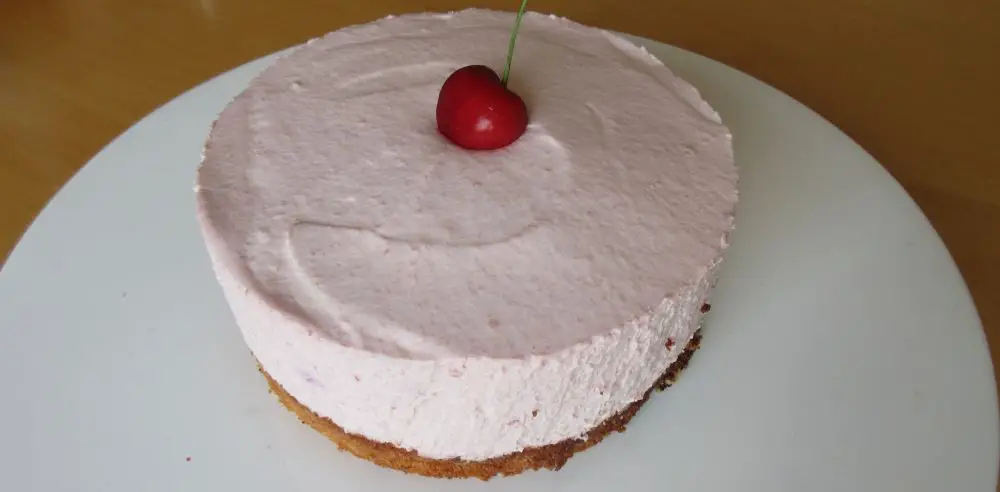
If you want your cake to look nicer, repeat the procedure with the blended cherries and gelatine and pour the mixture when it’s cool and starts to thicken over the top of the cake.

Dober tek!
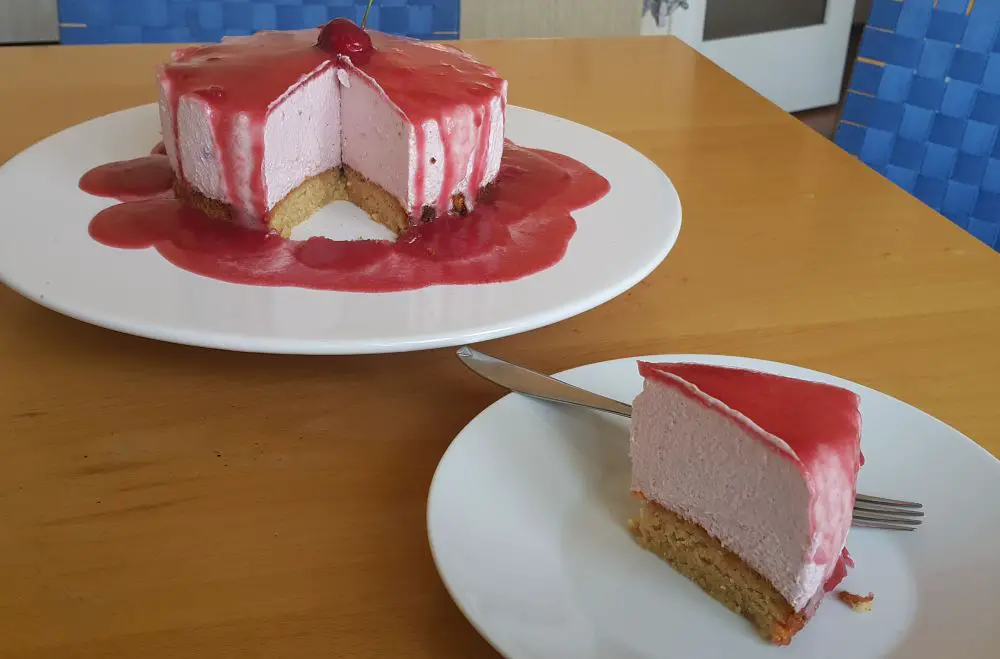
The cookbook Cook Eat Slovenia has won two awards at one of the world's most prestigious cookbook competitions, known as the "Oscars" of gastronomic literature.
This book on traditional Slovenian recipes was written by Špela Vodovc and published in English. The selection of recipes presented in the book has been used in her family for many generations and honors her family heritage and traditional Slovenian cuisine. Her dream was to help the world discover Slovenian foods. The dream of sharing these recipes with the world and allowing people to explore Slovenian culture through its cuisine was the driving force behind the project.
The book was published at the end of 2019, following a successful campaign on Kickstarter, and reviewed here The author then entered the world’s biggest cookbook event, the Gourmand World Cookbook Awards, and made the finals in three categories: best cookbook in translation, best self-published cookbook and best cookbook focused on food tourism (countries & regions), which made it the winner for Slovenia in all three categories.
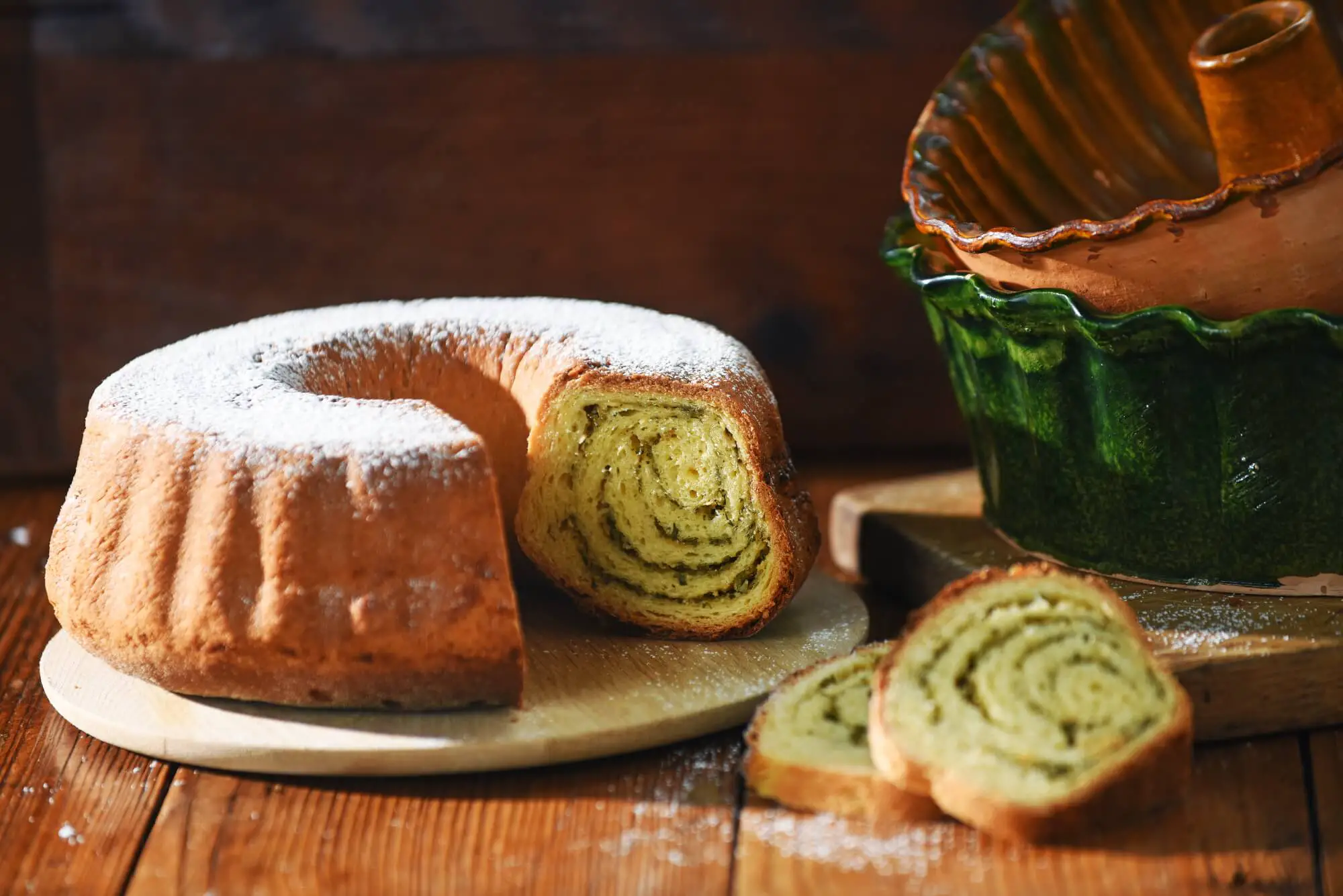
The award announcement ceremony was meant to take place in early June in Paris at the World Cookbook Fair but this has been rescheduled due to the current crisis. For the first time since 1995, when the culinary Oscars first took place, the organisers thus announced the winners prior to the main ceremony. Out of books from 225 countries and regions, Špela Vodovc’s debut, titled Cook Eat Slovenia, ranked among the top three in the world, with 2nd place in the category of “food tourism (countries & regions)” and 3rd place in the category of “self-published.”
The book will lead to the wider recognition of traditional Slovenian dishes around the world and entice travelers to visit Slovenia, especially with next year seeing the country become an official European Region of Gastronomy.
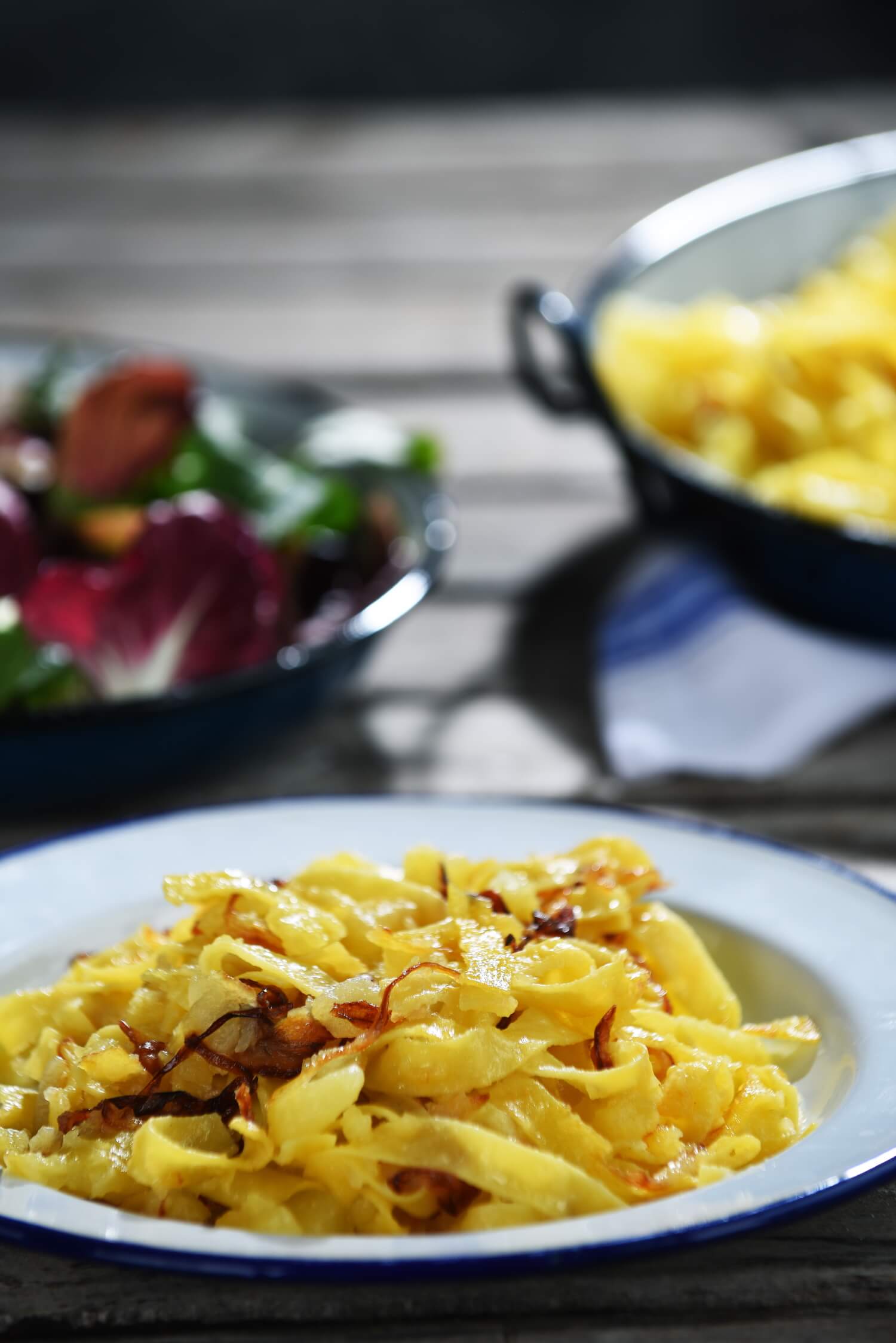
You can purchase the Cook Eat Slovenia cookbook here, and take a look at some of the recipes shared from the book below:
Easter Breakfast - Velikonočni Zajtrk
Empty shelves over the weekend suggest that some people’s pantries and refrigerators must be filled with onions, carrots and meat.
Since the stores already recuperated from the last weekend’s panic buying, it is time to find solutions for at least all those onions, which could go bad after all the work with kids at home proves too much for cooking as well, and the entire family switches to Nutella on toast three times a day.
Golaž is a great solution for the problems described above. Although it takes several hours to actually get it properly cooked (we suggest six hours altogether) most of the work involves stirring it from time to time so that it doesn’t burn at the bottom. This means that we can easily move our office/school into the kitchen for the time of golaž cooking, while ending the day with 10-15 delicious portions we can then serve with pasta, polenta, baked potatoes or even some bread, with the dish being even better the next day, and the next (if safely stored).
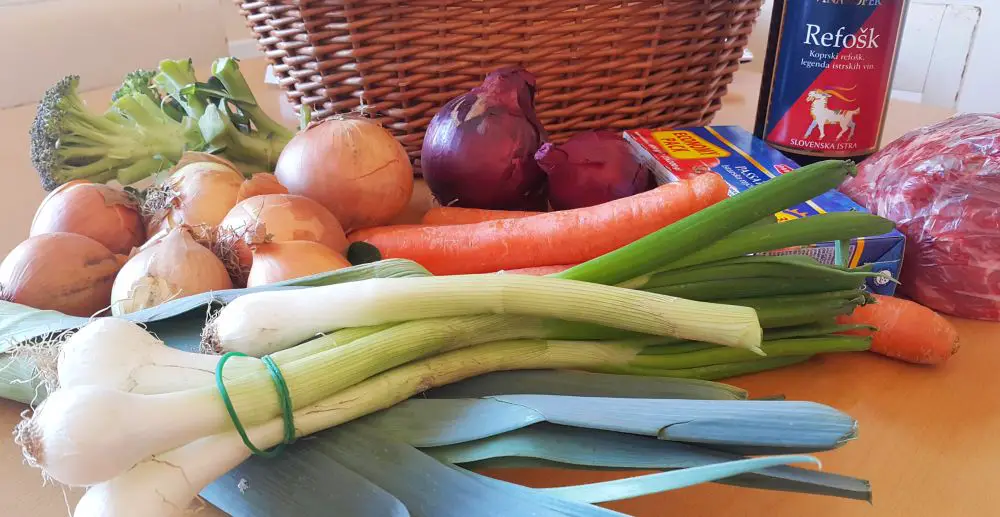
Ingredients:
Cut the onions – there are plenty, so a cutting gadget or food processor will come in handy here – and stir fry in olive oil until they release juices. Cut the meat into large cubes, stir it into the onions and add some stock or hot water if necessary. Cut the carrots and the remaining vegetables and add them to the pot together with salt, thyme and summer savoury. Cover the ingredients with stock or hot water, then cook for at least two hours. The onions should be completely soft before any wine or tomato are introduced to the mixture.
Then add wine and canned tomatoes (or passata) and cook for another few hours so that the meat becomes completely soft.
Let golaž rest a little before it’s served.
If you are not having a large family on your quarantine feast and if your golaž is meant to last longer than two days, put some in the freezer.
Dober tek!
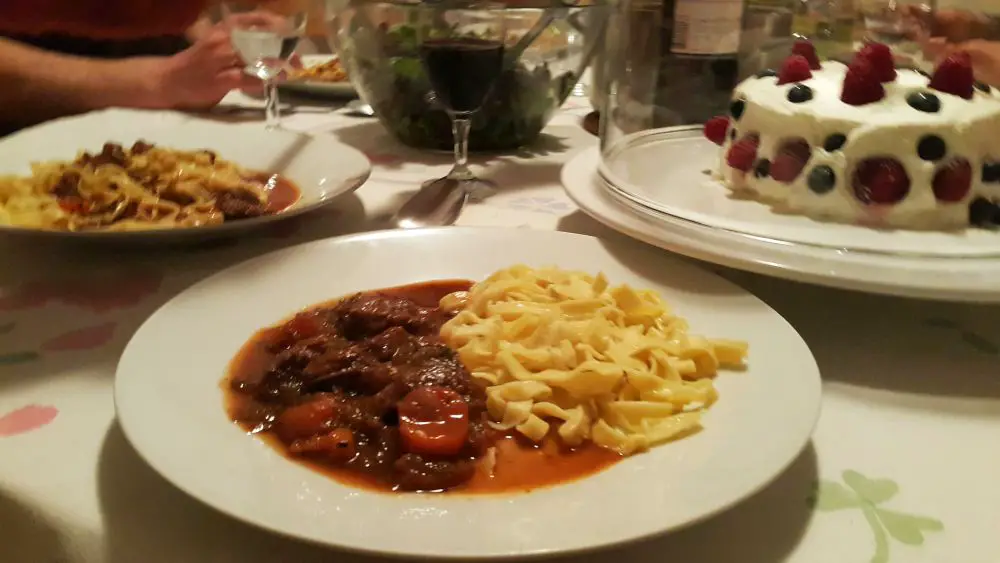
For many people in Slovenia, snowballs are a nostalgic dish that reminds them of grandma’s kitchen from their childhoods.
For me, they have always been a mythical dish my classmates talked about. No one ever made them in my family and, to be fair, they made little sense when described: beaten egg whites cooked in milk and served with custard.
But the time has come to test the recipe and make some notes if things don’t work out as they should.
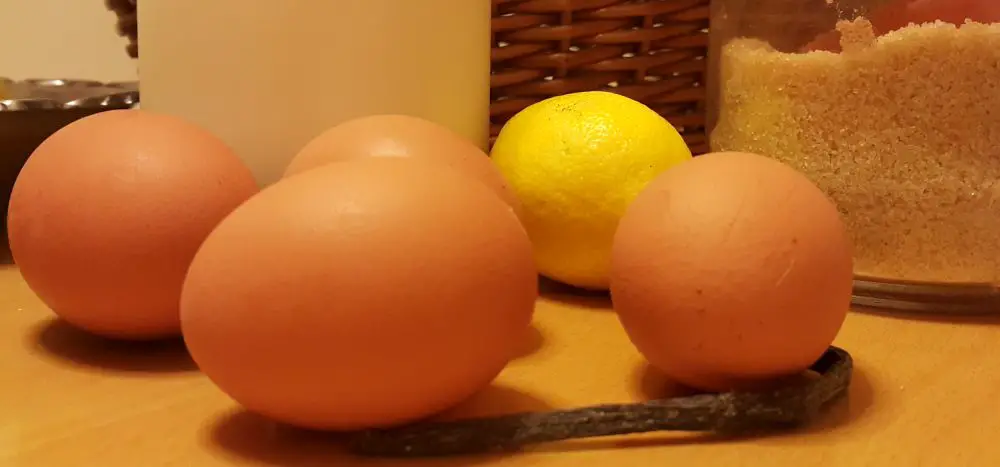
For the snowballs, we’ll use half of the sugar, egg whites and lemon juice. Beat the egg whites and lemon juice till firm, add sugar and beat some more until it sticks to the sides of the container.
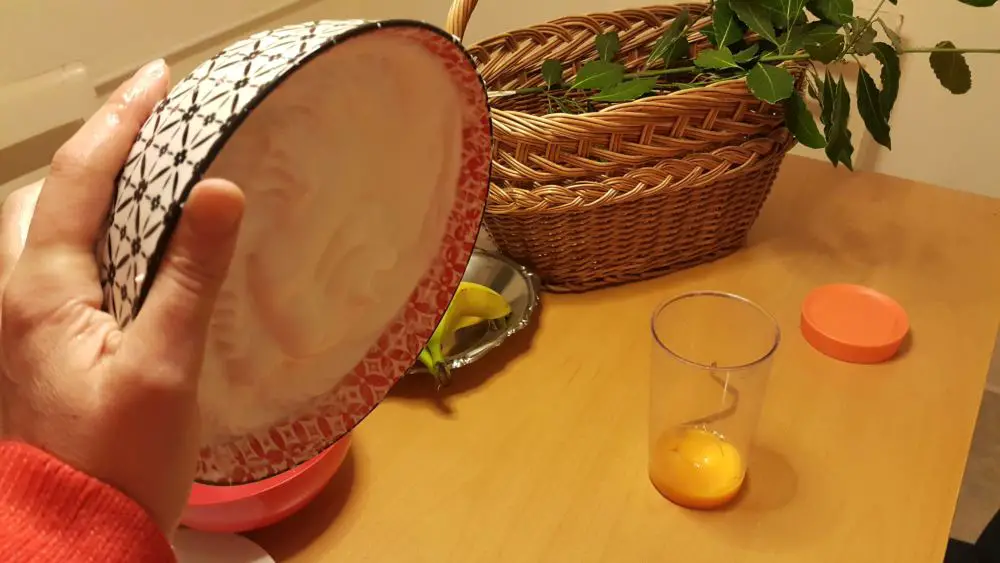
Preheat the milk in a pot or pan until it starts to simmer, then turn down the heat so that the milk doesn’t overflow. Take a spoon and place four spoonful’s of beaten egg whites into milk for 10-20 seconds, then carefully turn around and cook on the other side about the same amount of time. Take them out and repeat until all the snowballs are cooked.
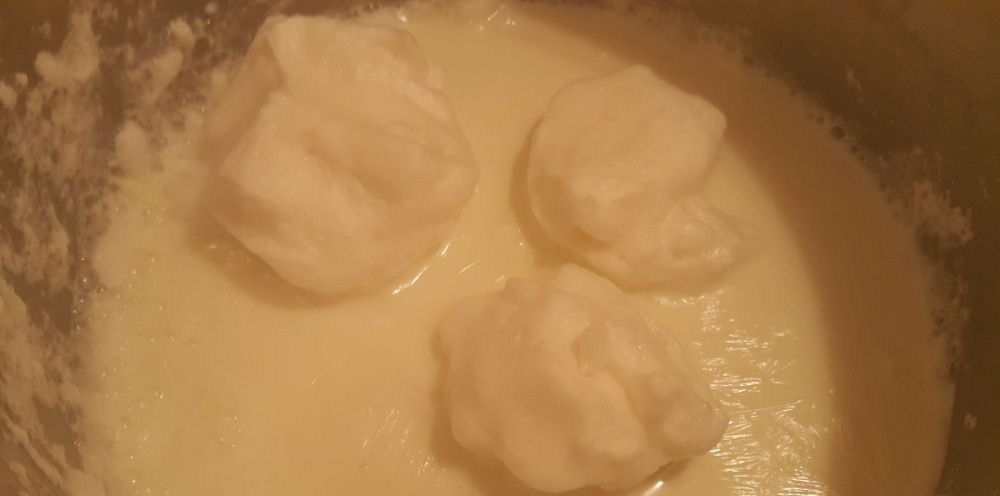
Beat the egg yolks with the remaining ingredients, stir in some cold milk (about 1 dl), then stir this into the milk in which snowballs have been cooked. If there are parts of egg whites floating around, take them out if possible. Stir the mixture over a low heat until it reaches at least 72 degrees Celsius, but do not overheat or lumps will appear. The mixture should thicken slightly but remain runny.
Cool the custard a little then pour either over the snowballs or into a serving bowl and place snowballs on top of it.
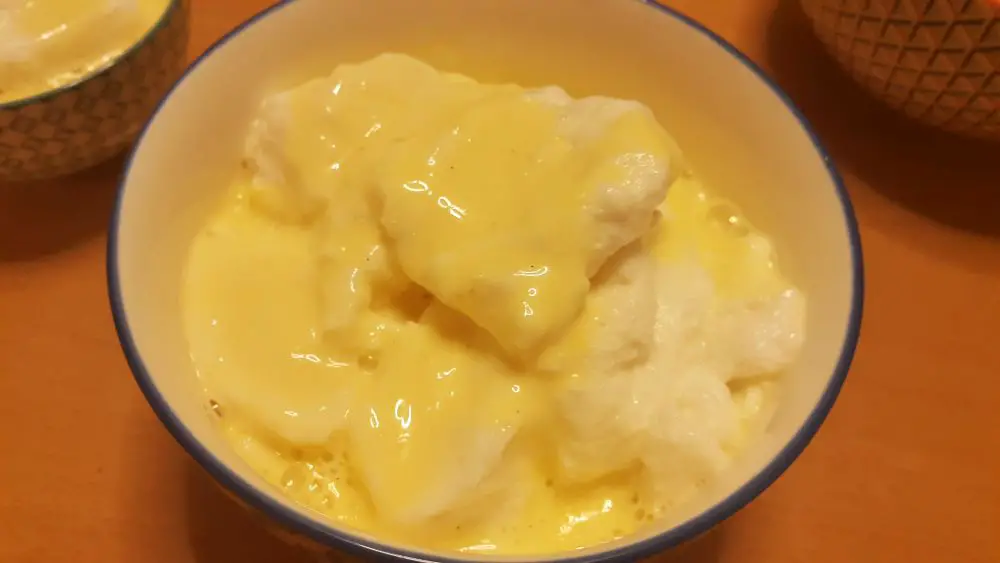
So what did I learn in making this dish? First of all, four eggs produce a lot of snowballs. You might try using fewer eggs but the problem is that you’ll need a lot of milk for cooking anyway. You might then decide to ditch some milk or use it all for a very runny custard. Our “solution” to this problem was to overcook half of our snowballs, turning the “fluffy clouds” into not that fluffy flat rubbery sponges, which went straight into the compost bucket. A further experiment showed that they turned out much better if cooked a little less than a bit more. Actually, when you place them into hot milk, they will expand a little, and this is the right time to turn them around.
Secondly, serving them cold is a must. One teenager who volunteered to try the results ate about one quarter (one whole egg with accompanying sugar) warm, and complained about being sick afterwards. Another subject, who ate only one snowball properly cooled down in a tiny bowl said it was delicious. It is not entirely clear, however, how much temperature contributed to the first person’s sickness, but the snowballs do taste better when cold.
Bowl size comparison of both servings:
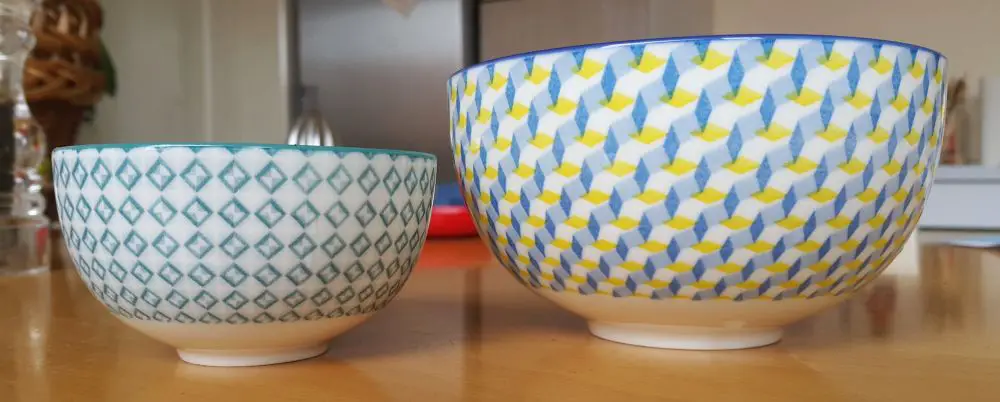
Consider the full big bowl picture above as a full family meal. A one-person serving should look more like this:

Dober tek!
Pust is approaching, starting in Ptuj this weekend and around the country in the weeks ahead. It’s a time of costumes, naughtiness and feasting, with krofi a key item in the latter. Krofi are jam (or jelly) doughnuts (or donuts), and you’ll learn how to make them in today’s recipe. However, if you’d rather buy one readymade then know that in Ljubljana “the best” are said to come from Hotel Slon, on Slovenska and Čopova. The next best, in our opinion, are those from Rašica and Trubar, in Črnuče and Trubarjeva cesta, respectively. But here’s how to make your own, which you can of course adjust to better suit your taste, making it the best for you.
Ingredients:
Sift the flour and place it in a mixing container. Make a dimple in the middle and pour warm milk in it. Crumble yeast into the milk then wait for it to rise.
Into the side of the mixing pot add egg yolks, oil, sugar, vanilla sugar, salt, lemon jest, lemon juice and rum. Mix until the dough is smooth. You can beat it with a wooden spoon until it starts coming off the side of the container.
The dough needs to be soft, at least compared to the dough for potica.
We then divide the dough into 10 pieces of same size, 70-80 g each, and shape them into balls. We place the balls on floured cloth and cover them for 10 minutes to rise, then turn them around and cover for another 10 minutes. If the dough is rising slowly then be patients and wait a bit longer, so the doughnuts won’t sunk too deep in the oil when frying.
Preheat the frying oil to 170°C. To test whether it’s hot enough, dip the handle of a wooden spoon into the oil, and if bubbles form around it then you’re ready to fry.
Place your doughnuts into the hot oil and fry on each side for two or three minutes. Take them out and place them on a rack or a piece of paper to drain. Meanwhile fill a large syringe with apricot jam and inject it into the still warm donuts.
Wait till cool then sprinkle with powdered sugar.
As a child I remember how occasionally my gourmet grandpa showed up at our house with a couple of sweet blood sausages called mulce, wrapped in a newspaper. We would put them in the oven and in an hour or so one of the best desserts I can remember was ready. Their skin was crispy and on the inside there was this crumbly but still consistent chocolaty filling with all the best stuff one can find in the potica-like dishes of Gorica.
Over time I have met some people who have claimed to have eaten mulce but did not like their overwhelming blood content. I had no idea what they were talking about as with all the nuts, raisins and chocolate, blood really couldn’t do much more than provide some consistency to the mixture.
Apparently even Slovenian ethnographers do not seem to be aware of the Gorica version of the dish, but rather associate it with the impoverished countryside recipes of Karst and Brda, where they could simply be called black pudding.
Last year my grandma informed me that she had found my now long gone grandpa’s mulce recipe, that she had kept in a very safe place. Being a historian he probably typed it himself, but when exactly these investigations took place remains unclear. He grew up under Italian fascism in Kanal and after the war his family moved to Gorica, the source of the recipe he not only preserved but upgraded a little through the practice he continued by visiting the farms around Idrija, where he later worked and died.
This is what he typed:
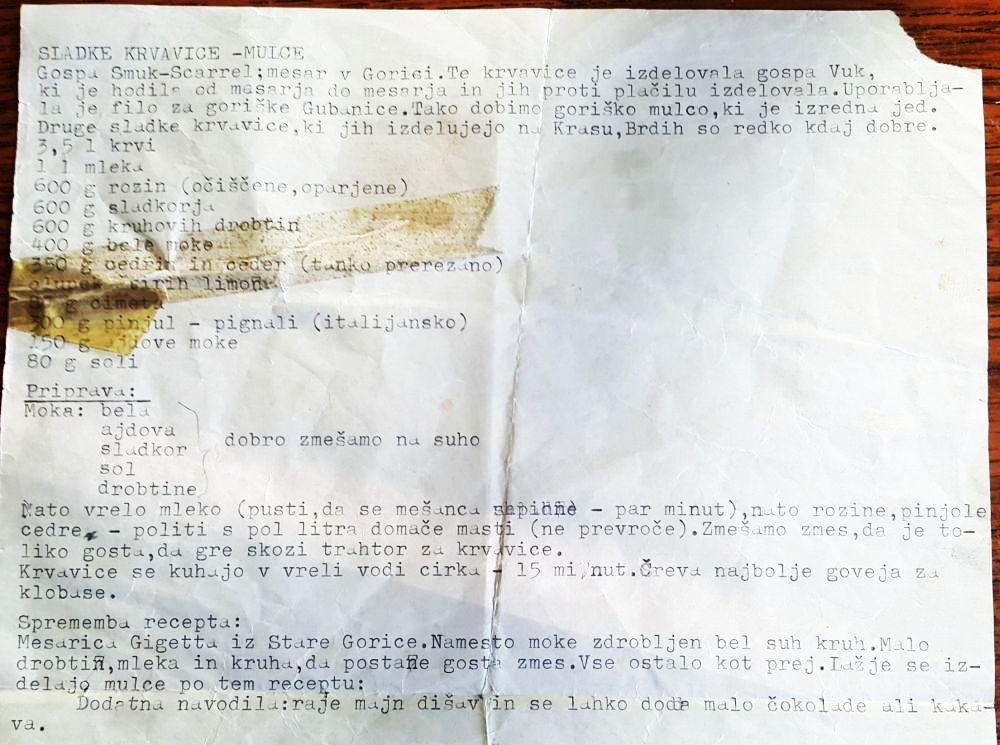
Translation:
Ms. Smuk-Scarrel; butcher in Gorica. These blood sausages were made by Ms. Vuk, who went from butcher to butcher where she manufactured them for money. She was using filling for gubanica (a form of potica) of Gorica. This way we get Mulca of Gorica, which is an exquisite dish. Other sweet blood sausages, which are made in Karst and Brda are rarely good.
Mix the ingredients well while dry.
Then add boiling milk (and wait so that the mixture bloats – a couple of minutes), then raisins, pine nuts and candied peels – pour over half a litre of lard (not too hot). Make a mixture of a thickness that would allow it pass through the sausage funnel. Sausages need to cook in boiling water for about 15 minutes. The cow intestines for sausages are best.
Change of recipe: butcher Gigetta from Old Gorica. Instead of flour we use crumbled dry bread. A little of breadcrumbs, milk and bread to make a thick mixture. Everything else like before. Mulce are easier to make according to this recipe.
Additional instructions: rather less fragrances and can add some chocolate or cacao.
Potica in its classic form is not the fastest dish to make. Nevertheless, during the holidays we came across a very delicious potica (as seen in the picture above) with lots of filling and a promise that it was easy and relatively fast to make.
We subsequently obtained the following recipe:
Preparation process:
Prepare the dough first so that it can rest while you’re preparing the filling.
It’s good if all dough ingredients are of the same temperature, and it’s better if they are warm than cold.
Crumble and dissolve the yeast in a jar of milk and stir in a pinch of sugar and a spoon of flour. Leave in a warm place for about an hour.
Place the flour into a larger container where the dough is about to be made, add salt and form a well in the middle of the pile of flour. Pour the yeast mixture in the middle of the well, add the egg yolks and stir them into the mixture while already mixing in the flour from the walls of the well, until soft ball of dough is formed.
The dough should be quite soft, so it’s is better to bake two small poticas than a big one. For two small potica’s (the baking trays that were used were 10x30 cm size at the top), divide the dough into half and let it rest for about half an hour.
Mix all the ingredients into the filling. It shouldn’t be too dry to spread on the top of the dough once ready.
Roll the dough on a floured cloth, spread the filling across and roll. Spread butter and bread crumbs on the inside of the baking tray so that potica won’t stick to it. Put potica into the baking tray and bake at 150 degrees Celsius for about an hour and a half.
Cool the potica down before cutting it.
Dober tek!
Pot fried potatoes (slo: pražen/tenstan/renstan/restan krompir) is one of those Slovenian side dishes that went from a Sunday staple to almost forgotten since the introduction of various dietary wisdoms entered the cuisine, especially the one suggesting that high caloric meals based on fats and carbohydrates won’t do much for people’s cholesterol levels.
It was only a matter of time, however, before getting rid of once seen as unhealthy lunches actually brought an even worse feeding habit, the result of a lack of time and therefore cooking, and its replacement with ultra-processed snacks with additives that make them last as long as the plastic wraps they’re sold in.
So old school grandma style meals are slowly coming back again, at least for those of us with childhood memories of how Slovenes once used to eat.
The basic ingredients of pot fried potatoes are a pot of boiled potatoes, onions, lard/oil and salt. The “correct” procedure, however differs from region to region, which is also reflected in the local naming of pot fried potatoes, especially with regard to the central Slovenian term “tenstan krompir” and Styrian “restan krompir”.
That there is a difference in preparation technique becomes apparent if we look into the etymology of both adjectives; “restan” comes from German word rösten (to roast), while “tenstan” must originate in German word dünsten, that is, to stew.
Our recipe today will be based on an old recipe for “tenstan krompir”, that is pot fried potatoes that are much mushier in texture, as a bit of stewing is involved in the preparation process. The whole procedure (that involves a preparation of a traditional potato salad as well) has been captured in a fun video below that also made us reconsider the equipment and design of our kitchen.
Ingredients:
beef stew if available
We wash the whole unpeeled potatoes and boil them for about an hour, covered, until they soften up and half of the water disappears. Make sure they don’t burn.
Cool down the potatoes, then peel and slice them as in the video above.
Slice the onion and place it on cold oil in a pan. Heat it up and stir fry onions till soft and yellow. Then push the onions on one side, add the sliced potatoes to the other, move the onions to the top of the potatoes and press down with a spatula. This is how we are making “restan krompir”.
Now since Sunday lunch must also include a beef soup, we pour some of that soup into our “restan krompir”, which will turn it into “tenstan krompir” and after a minute or so, the pot fried potatoes are ready to be eaten.
Serve with any kind of meat, but most probably with beef from the soup. As a child I liked it with some mustard.
Dober tek!
Barley, one of the oldest cultivars in the world, has been known in Eurasia for about 10,000 years. Its variety of uses should therefore not be surprising. Barley has been used for food and livestock feed and is a key ingredient in the production of various alcoholic and non-alcoholic beverages such as beer and whiskey, and serves as a substitute for coffee.
Barley is also the main ingredient of a popular Central and Eastern European dish that bares the Slovenian name ričet. The word ričet is derived from a Styrian German word ritschert, which is probably a combination of two German words: rutschen, (to slip, slide), and rutschig, (slippery). Sometimes ričet is also called ješprenj, which is a Slovenian word for dehulled barley. Hulled barley, on the other hand, is called ječmen in Slovenian.
Ričet is considered a winter dish although fans eat it throughout the year. This “spoon dish” (jed na žlico), however, has not only been characteristic of the rural environment but was also served in the dining rooms of the bourgeoisie.
The dish has also been associated with the mountaineering culture of the Slovenes, popularised by the end of the 19th century; hikers would call themselves ričetarji, after the fact that they would hang out together in mountain huts over plates of ričet.
To put it simple, ričet is a thick soup that consists of dehulled barley (also pot barley), seasonal vegetables and, almost mandatory, some cured pork. It is believed that ričet isn’t worth its name unless “a pig steps in it”.
Although the vegetables used can be adjusted, ričet will be recognisable as such if it contains some orange carrot, some yellow carrot or kohlrabi, some brown beans, green fresh parsley and some potato for colour. For our ričet we used the following ingredients:
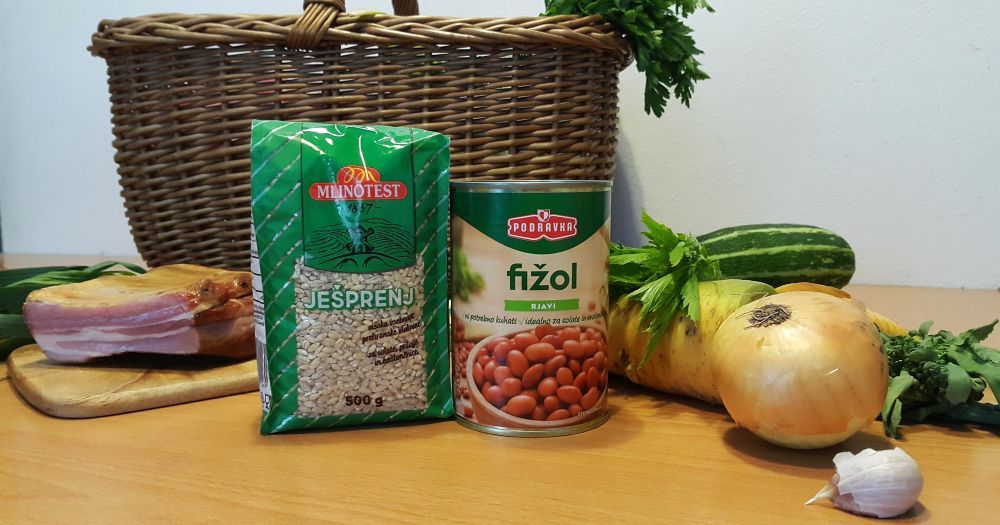
Ingredients:
Usually people soak barley before cooking it, but if you want your ričet done fast and without much mess you can just use it dry. It should be cooked in about an hour even if not soaked.
Some people will cook the ribs separately, perhaps to extract some salts and flavours before it’s added to ričet. Cured smoked pork is in fact quite strongly flavoured and shouldn’t be used in the same amounts as ordinary meat - just a couple of chunks per serving. Yes, we put a whole rib on the plate for the photoshoot, to make it look good, but it was taken out afterwards and cut into slices before a few went back on the plate.
Barley will also take a lot of water, much more than rice, so prepare to add some liquid while the ingredients cook.
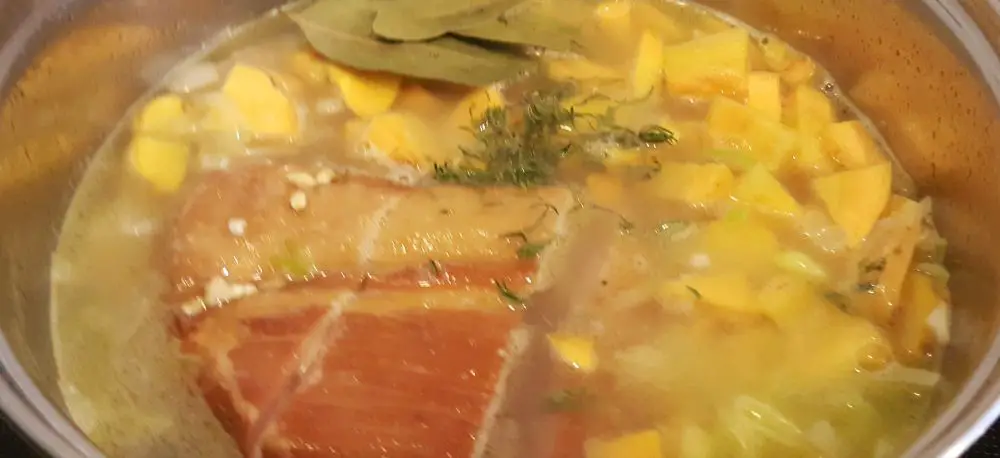
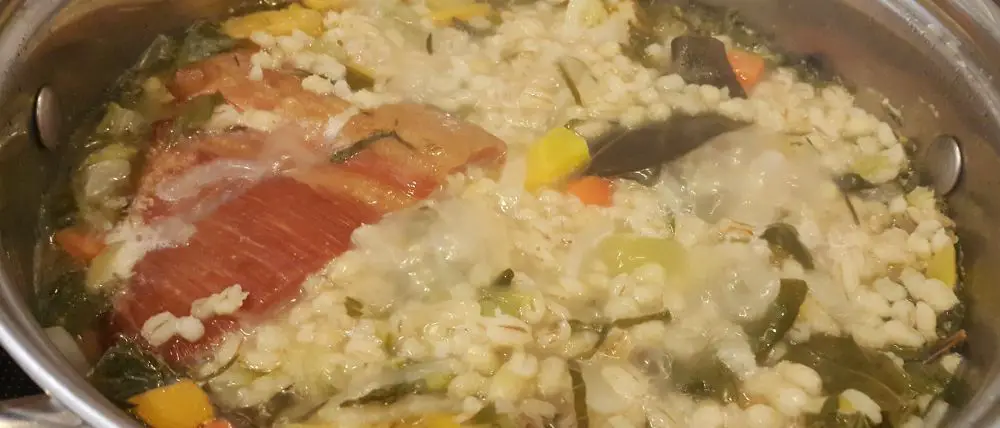
Here’s how we did it.
Chop the onions and stir fry in the olive oil till glassy. Add chopped garlic and stir fry till its aroma rises. Add sliced leek and stir some more. Add pork chops, pot barley and water/stock so that everything is more or less submerged.
At this point you can already add some herbs: lovage, summer savory, celery leaves and bay leaves. Save parsley for the end.
While waiting for the soup to start boiling, dice carrots and other raw vegetables, add them to the soup and cover. Let it simmer till the barley is more or less soft, then add canned beans and passata and cook for another 15 minutes or so. Make sure you wash the beans before adding them.
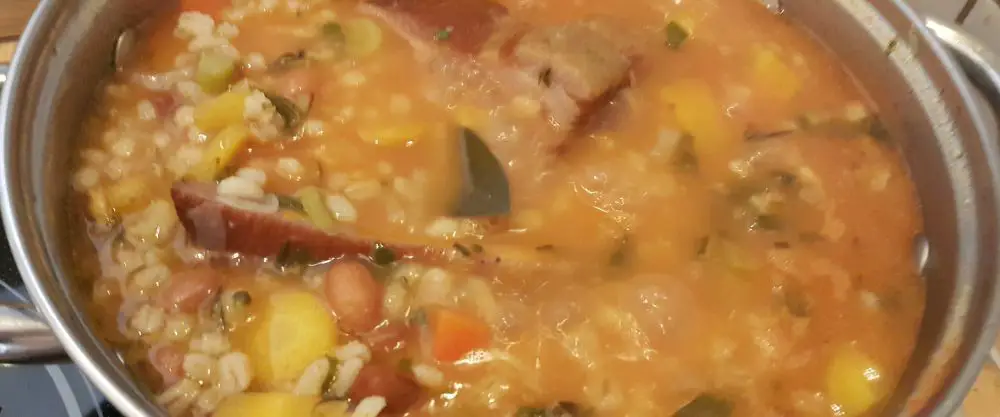
Take the meat out so that it can be sliced and added to the soup according to everyone’s preferences.
Ričet can be even better the next day. It might thicken up even more by then.
Dober tek!
